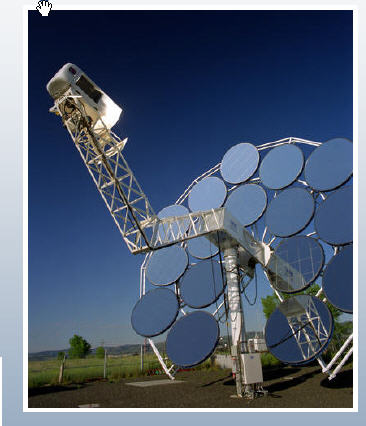
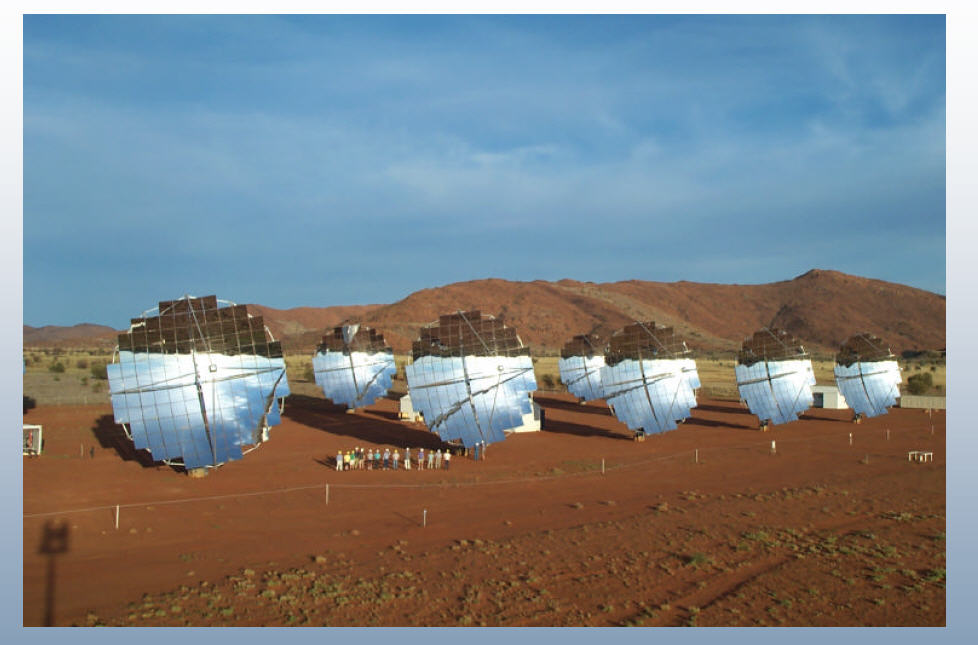


The basic idea here is to essentially take a large collecting area and focus it on a smaller area, thus concentrating the energy. This means that less PV material will be required to produce a given amount of energy and this, potentially, saves expenses.
The issue then becomes the reliability of the CPV components over time and
their resistance to heat load.
Also CPV systems function best under clear sky, direct-sun condition  clouds significantly compromise performance.
clouds significantly compromise performance.
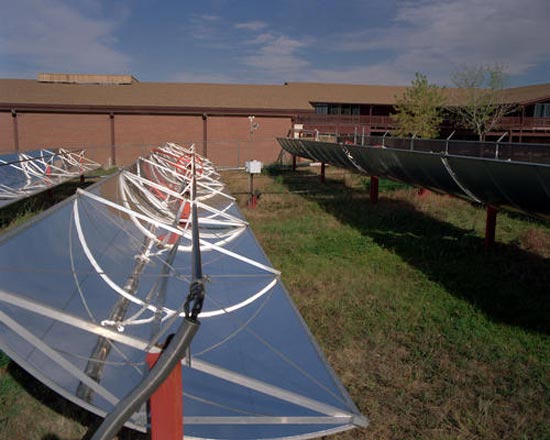

The heat exchanger:

Large arrays can be built to leverage abandoned cooling towers:
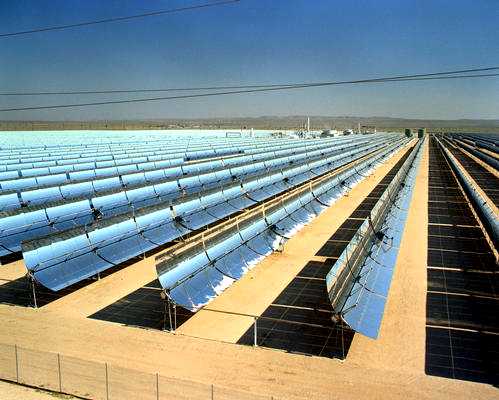

354 MW capacity located on 7 square km of desert in California
 So that's about 50 MW per square km.
So that's about 50 MW per square km.
Some equivalencies:
 600 MW
600 MW
 Many commercial systems now use something called a parabolic trough: Here the focus point of the parabolic trough is a receiver pipe. The pipe is filled
with oil (not crude oil) and is heated to about 400 C. This heat energy is then used to
generate electricity in a conventional steam generator.
Many commercial systems now use something called a parabolic trough: Here the focus point of the parabolic trough is a receiver pipe. The pipe is filled
with oil (not crude oil) and is heated to about 400 C. This heat energy is then used to
generate electricity in a conventional steam generator.

Most concentrators must track the sun throughout the day and year to be effective. This requires expensive tracking mechanisms and precise control systems. A flat plate system is stationary.

Solar thermal towers use these arrays.
The centralized power tower is still being invested in:
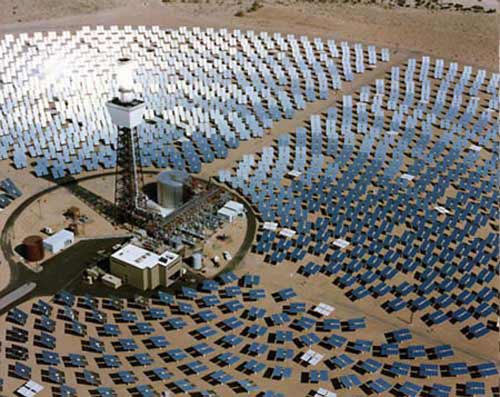
 Solar thermal electric is then
dispatchable (i.e., available on demand, 24 hours).
Solar thermal electric is then
dispatchable (i.e., available on demand, 24 hours).
But this technology is limited by optics and is not scalable!
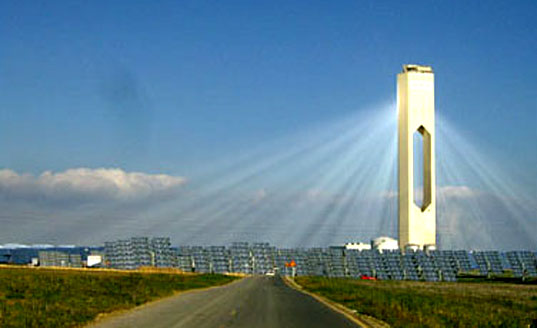

Can be made large,
Point focus array:


Most expensive but can track the sun.
Within CPV systems, the concentration ratio can have high variance.
If light that falls on 100 sq. cm of reflector surface is focused onto a 1 sq. cm surface of PV material, then the concentration ratio is 100. Current commercial design concentration ratios are in the range 200-300 suns. Anything beyond 500 suns is likely impractical due to potential heat fatigue of the material
But let's be optimistic and return to the theme of multi-use of land per horizontal footprint and envision:
The New Shopping Mall - using solar concentrated power to make hydrogen:
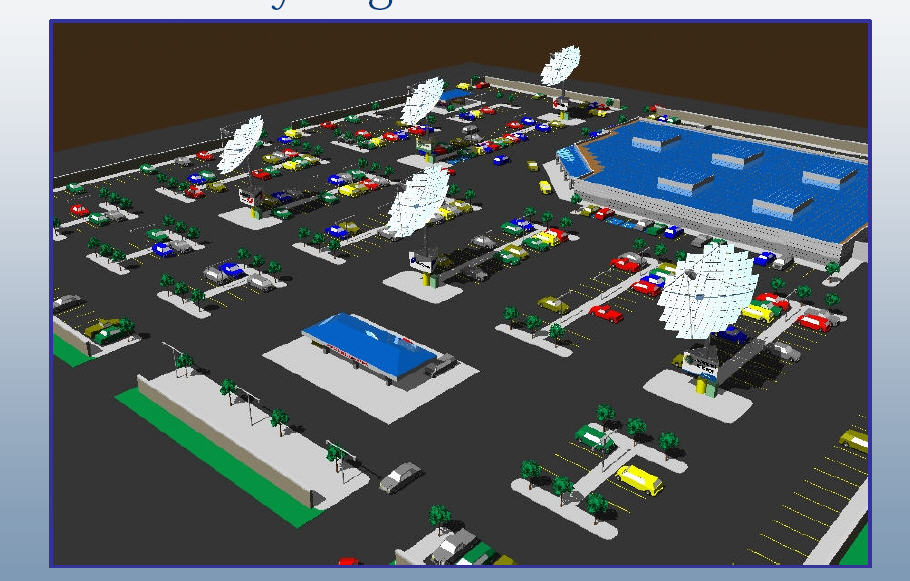


Major point: most parking lots are useless but could easily be transformed into land that produces energy.